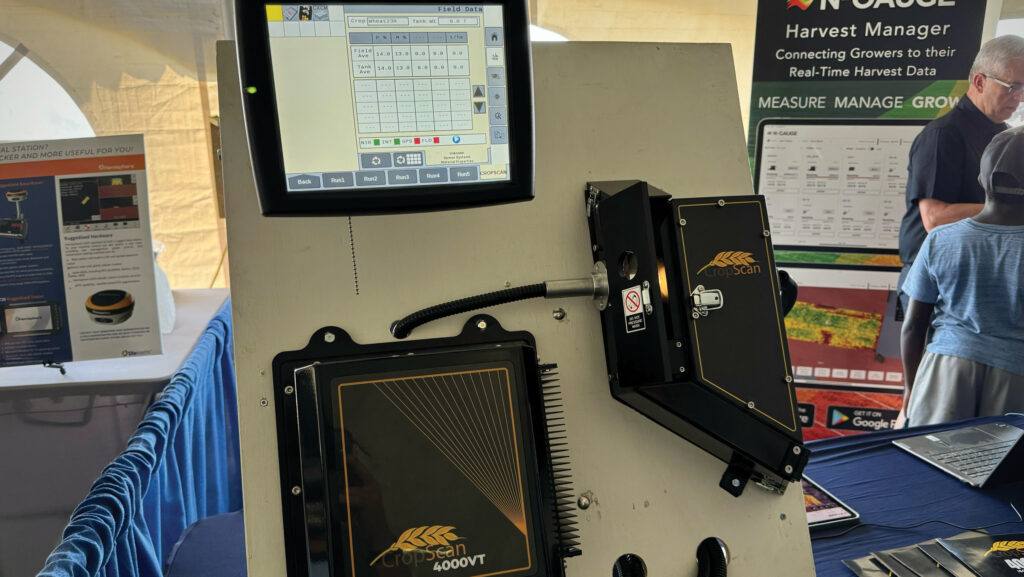Cropscan Ag 4000VT sensor analyses grain protein every 3secs
 © MAG/Oliver Mark
© MAG/Oliver Mark Cropscan Ag has launched a new combine-mounted grain sensor tuned to deliver more frequent analysis of crops.
The 4000VT, which is initially available for the latest New Holland and Case IH combines, takes roughly double the number of readings per hectare compared with previous models.
This is thanks to a shorter, wider sampling chamber that has cut the time taken for every near-infrared scan to three seconds, down from nearer seven. That equates to a reading every 4-6m, and 180/ha.
See also: Tips for setting your combine correctly
These include moisture and, where applicable, protein, oil, fibre and starch for all the major crop types.
When matched with yield and GPS data from the combine, the stats can be used to form field maps that are sent to the cloud each time the combine’s discharge auger opens to unload.
Owners can view these graphics and the associated crop analytics through the firm’s N-Gauge Harvest Manager app or other compatible farm management software, such as John Deere’s Operations Center and the Case IH/New Holland equivalents.
Protein insights
Grain protein readings are proving particularly popular because they give an indication of nitrogen availability and uptake.
This can help plan future variable-rate fertiliser applications to maximise nitrogen efficiency and crop yield, and any extreme variations can be flagged for on-the-ground soil tests.
High-yield, low-protein areas – which Cropscan estimates accounts for 30% of Canadian prairie land – can then be targeted with higher nitrogen rates to reduce variability.
Conversely, a combination of low yield and high protein might indicate water holding capacity or micro-nutrient deficiencies that need rectifying.
The system’s hardware is largely unchanged from previous iterations, with near-infrared light beamed through a remote sampling head fitted to the clean grain elevator. Any light that isn’t absorbed goes into a fibre optic cable.
Software in the spectrometer ECU processes this information and pairs it with data from the combine’s canbus system – crop type, yield, precise field location and the like.
One significant change from previous models is that the spectrometer is now water- and dust-proof, allowing it to be mounted externally behind the cab, rather than inside it.
This makes it far easier to wire up and saves cutting through the floor to thread cables in.
Isobus compatible
Operators can view real-time grain quality readings through a virtual terminal on an isobus-ready New Holland Intelliview 4 or Case IH Pro 700 monitor, eliminating the need for an extra screen.
Growers running older CNH combines, or those from any other brand, will have to stick with the Cropscan Ag’s 3300 model for now. It has a dedicated tablet, with the spectrometer mounted in the cab.
The 4000VT is priced at C$30,000 (£17,000) including installation. That’s up about C$5,000 (£2,800) on the 3300.

